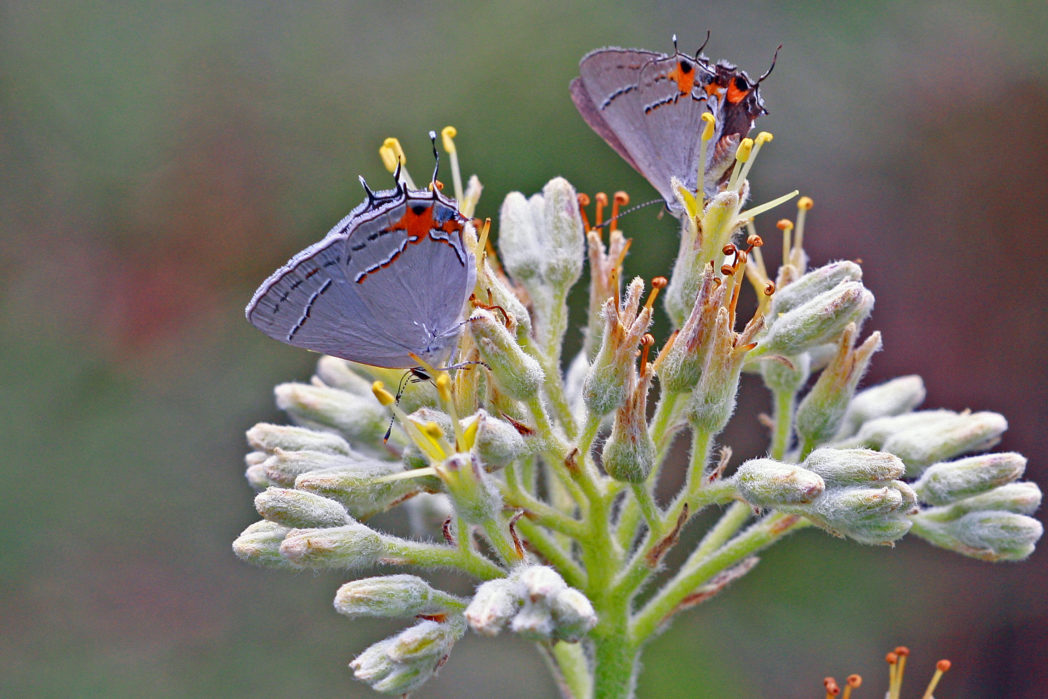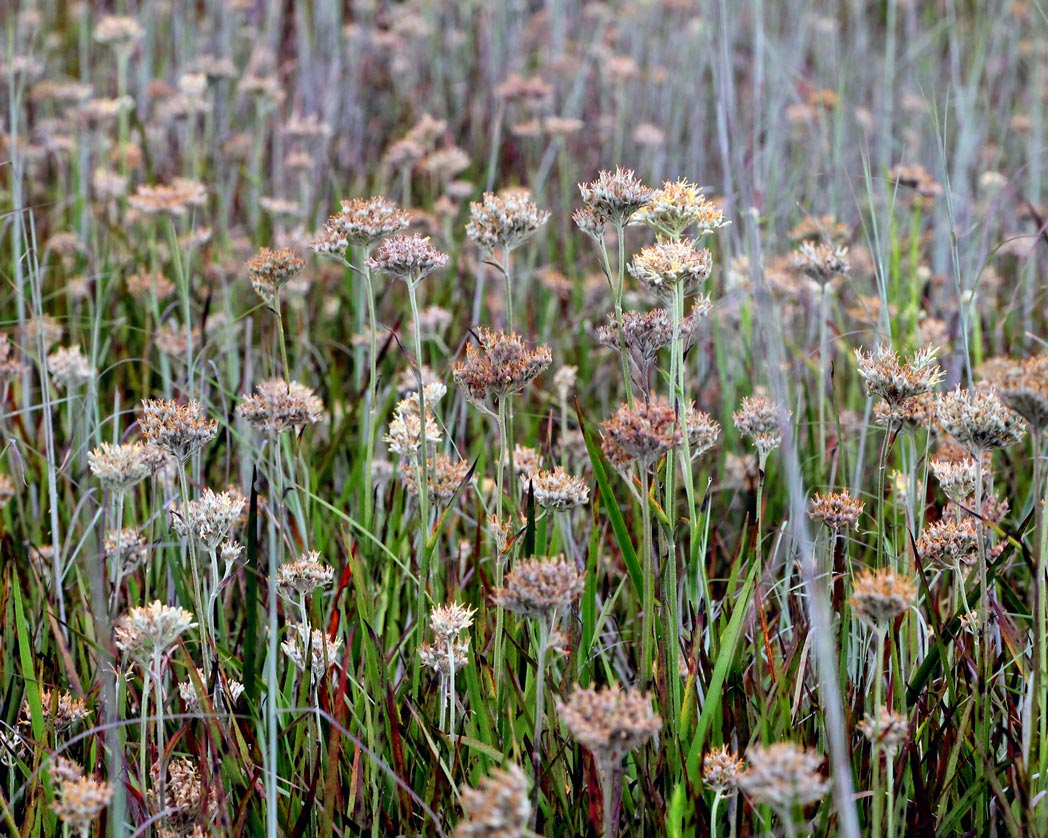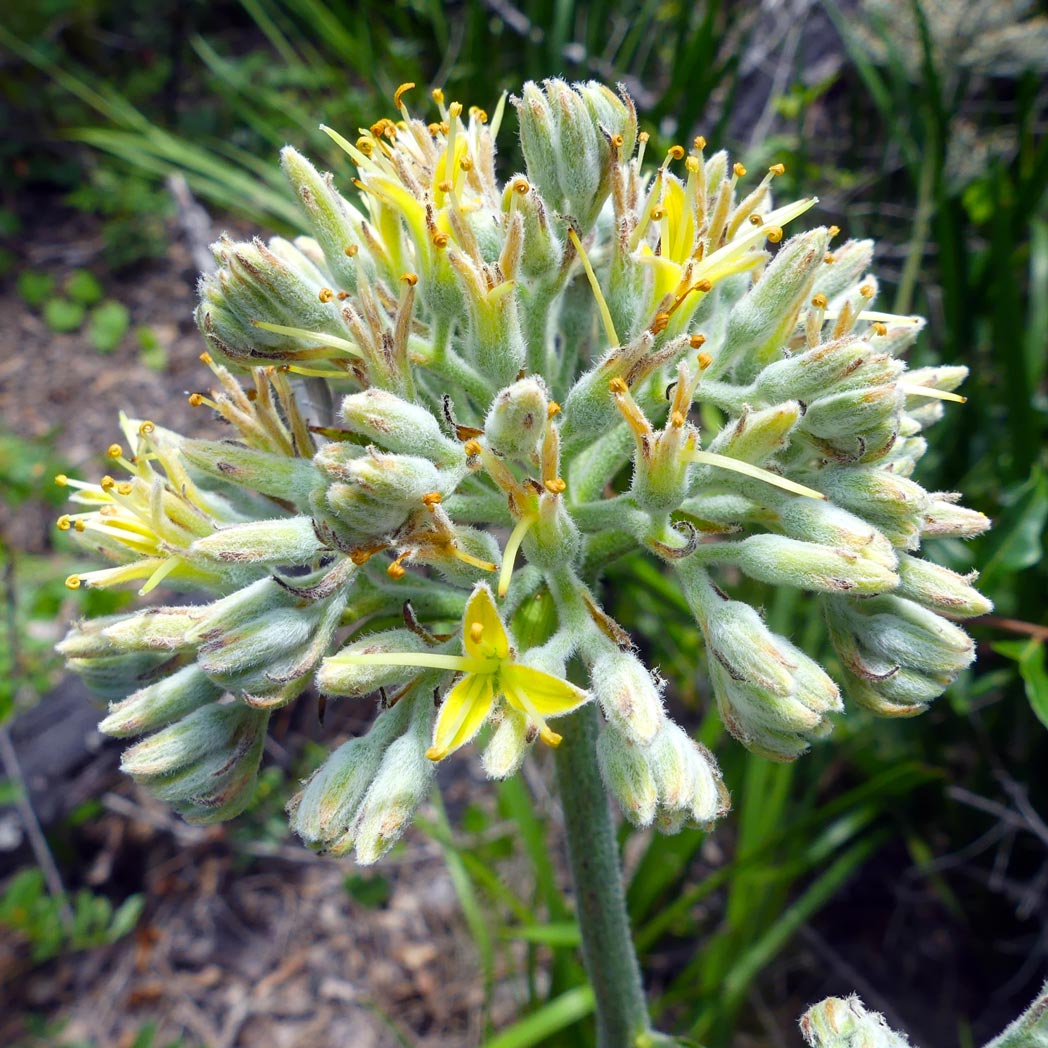Carolina redroot
Pictured above: Carolina redroot (Lachnanthes caroliana) by Mary Keim. Click on terms for botanical definitions. View post as a PDF.
Carolina redroot is an herbaceous wildflower found in wet flatwoods, marshes, bogs, dome swamps, savannas and coastal swales throughout much of Florida. It blooms from summer into fall, and attracts a variety of butterflies and moths. Its seeds are eaten by birds — especially Sandhill cranes — and the roots are favored by feral hogs, who are known to dig up and eat large patches of the plant. Carolina redroot is toxic to humans and livestock if consumed.

Flowers are born in fan-like terminal clusters atop erect, pubescent stems. They consist of three yellow inner tepals and three outer petals that are creamy white and covered in soft wooly hairs. Stamens are prominent. Anthers are yellow to rusty orange. Leaves are flat, lanceolate and become reduced in size as they ascend the stem. They are alternately arranged. The leaves give the plant an iris-like appearance before it blooms.

The common name “redroot” comes from the reddish color of the plant’s roots and rhizomes, which were used by Native Americans for dye.
Family: Haemodoraceae (Bloodwort family)
Native range: Nearly throughout Florida
To see where natural populations of Carolina redroot have been vouchered, visit www.florida.plantatlas.usf.edu.
Hardiness: Zones 8A–10B
Lifespan: Perennial
Soil: Moist to wet acidic soils
Exposure: Full sun to partial shade
Growth habit: 1–3’ tall
Propagation: Seeds, division
Garden tips: Carolina redroot is fast growing and is easily propagated from seed and by division of rhizomes. The plant is quick to establish and grows well in most wet conditions; however, it does have a tendency to spread if not maintained.
Plants are often available at nurseries that specialize in native plants. Visit PlantRealFlorida.org to find a native nursery on your area. Seeds are occasionally available from the Florida Wildflower Cooperative.

